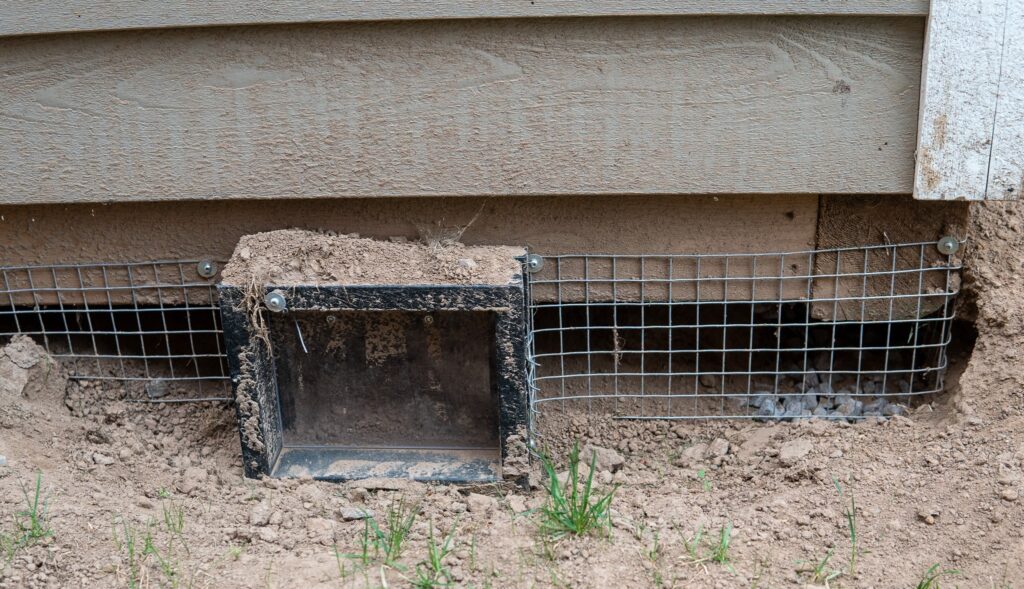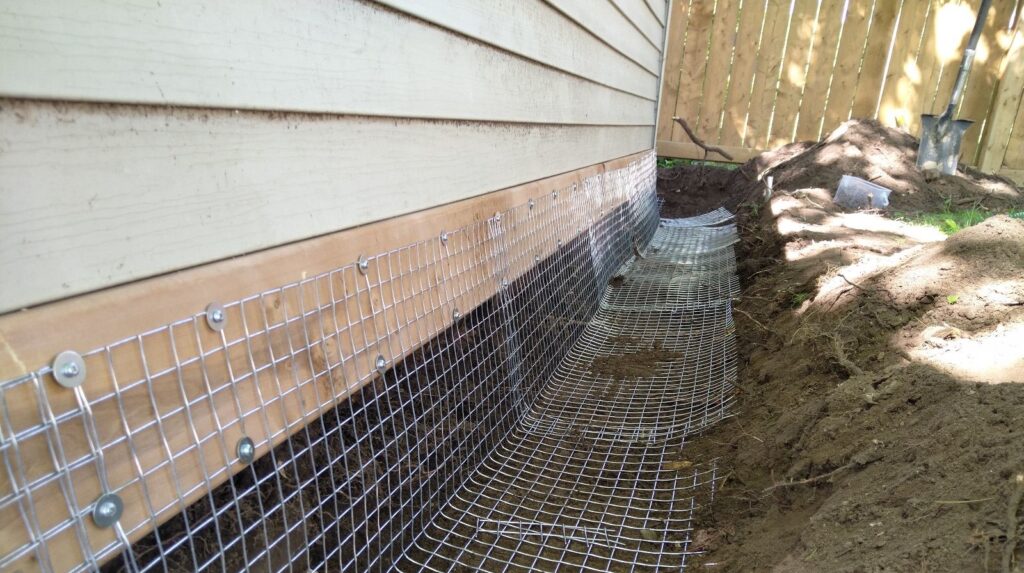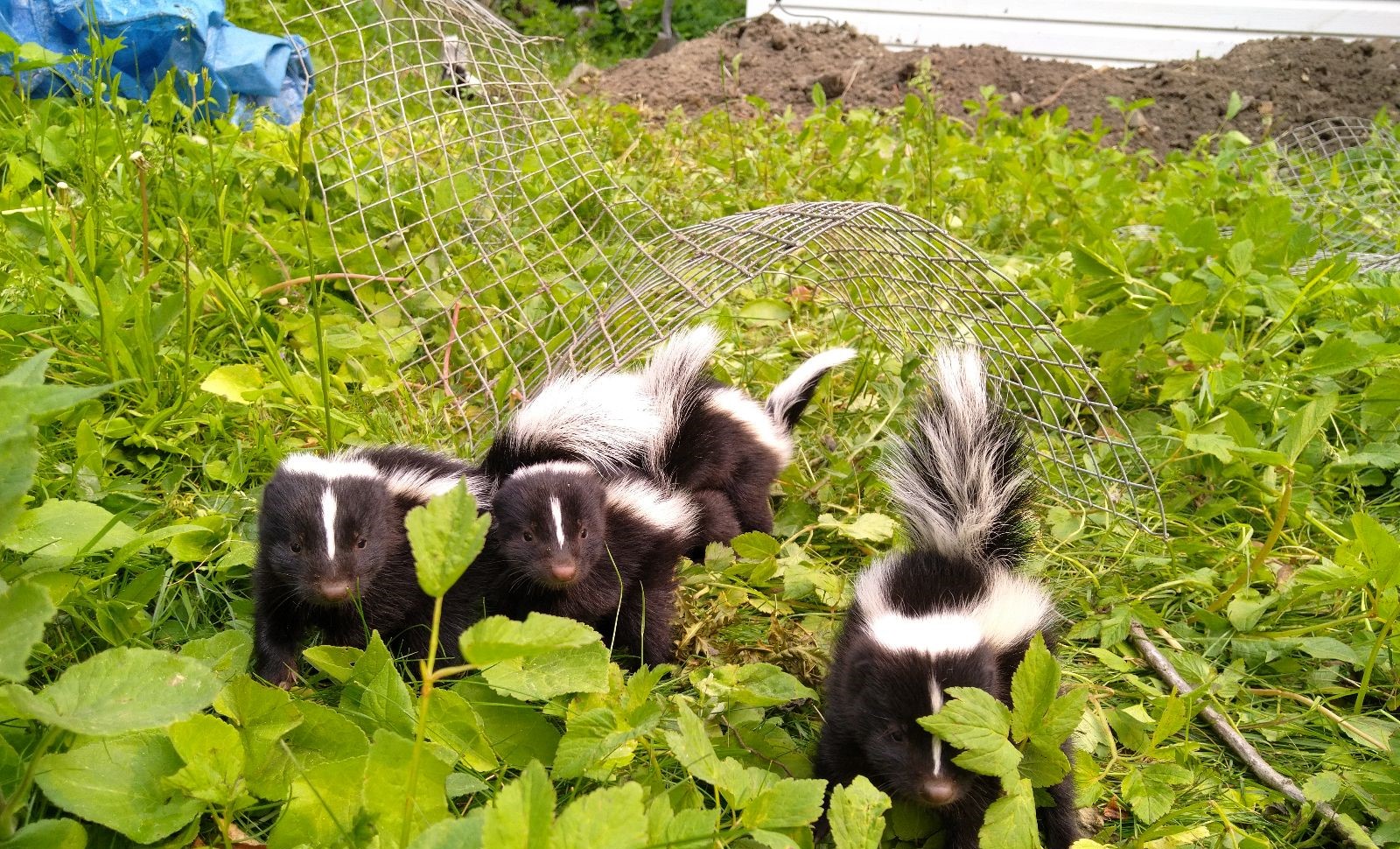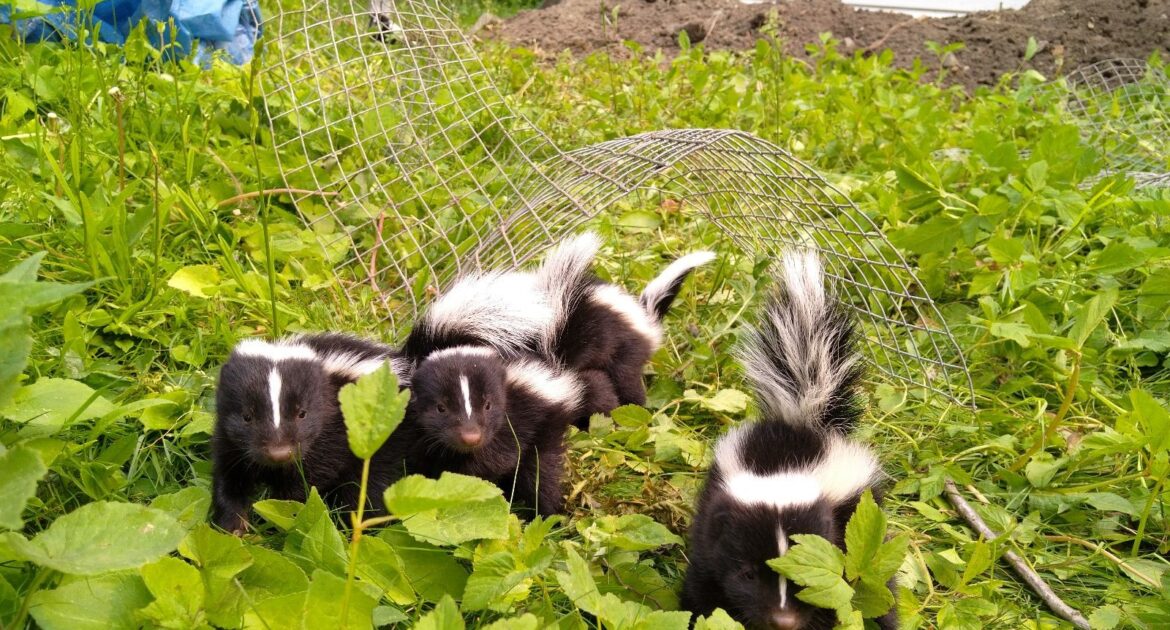Engaging with nature is one of the joys of being a homeowner. However, creatures like the stripy nocturnal visitors can sometimes turn your haven into a less pleasant space.
Understanding their specific ways of self-protection, including their notoriously odorous assault, is crucial in dealing with them effectively. We aim to guide you to decipher the cryptic signs of these creatures loitering on your property, manage the aftermath of their malodorous discharges, and avoid the pitfalls of attempting to extricate them yourself.
- Decoding Skunk Signals: Learn to recognize the intricate signs of an unwelcome residence in your territory. These slinky animals are notorious for leaving behind physical evidence of their presence.
- Tactics Beyond the Smell: There’s more to this creature’s defensive arsenal than their infamous odoriferous arsenal. Acknowledge the less-known strategies that these nocturnal visitors employ to thwart predators.
- Disarming the Aroma: Find out the suitable means of dealing with the repercussions of an olfactory altercation. The lingering aroma can be tough to handle, but with the right recipes, it can be neutralized effectively.
- Avoiding DIY Hazards: Darting into the realm of wildlife management yourself can be both cumbersome and risky. We’ll shed light on why professional intervention is a safer, more prudent choice.
- Calling in the Professionals: Explore the invincible benefits of allying with seasoned pros from a reputable wildlife control company.
By the end of our rendezvous, you’ll know how to navigate through these encounters and why our team specializing in wildlife removal in Annapolis is an unrivaled ally in effective wildlife management.
What are the Different Defense Mechanisms Used by Skunks?
As homeowners, it’s crucial for us to skim through the fascinating world of wildlife we may encounter in our surroundings. Among these, skunks and their unique line of defenses particularly stand out. Skunks typically resort to a variety of tactics when they feel threatened; these include:
- Stomping: In an effort to intimidate potential threats, they engage in a furious stomping act. It’s normally the first warning issued.
- Hissing: Coupled with stomping, they may also hiss to showcase their displeasure or discomfort.
- Spinning: If stomping and hissing go unnoticed, these black and white animals perform a quick, mock-charge while spinning in place.
- Iconic Odiferous Spray: As a last resort and the most well-known method, these creatures disperse a notoriously pungent secretion to deter predators or cause momentary blindness.
Each of these measures is a testament to how uniquely skunks address their safety. Thus, it’s critical to interpret these signs correctly and know when to give these creatures their deserved space. Yet, if they do become a frequent visitor at your property, it’s wise to consult professionals in wildlife management like us for safe and efficient removal.

How Often and Under What Conditions Do Skunks Spray?
Understanding the patterns and catalysts for a skunk’s infamous defense strategy is vital. When it comes to the questions of how often and under what circumstances these creatures emit their notorious scent, the following points should be noted:
- Generally, skunks refrain from using their aromatic ammo unless they feel extremely threatened. A warning sign is when these creatures start hissing, stomping their feet, and lifting their tail.
- The spraying capability of these nocturnal animals is influenced by their age. How many times can a skunk spray? While an adult can spray up to six times in succession, the younger ones have to be more conservative with their stench-producing ability.
- How far can a skunk spray? The fur-bearing mammals have excellent aim, and their noxious fluid can reach a target up to 10 feet away. Moreover, contrary to popular belief, they do have control over where and how much to spray.
- Following a full discharge, it can take up to a week for a skunk to replenish its scent compounds fully.
- The main ingredient in the offending scent, butyl mercaptan, causes temporary blindness and irritation when it contacts the eyes.
While a skunk’s primary defense method is viewed as highly nefarious, it’s important to remember that it’s not a sign of aggression, but rather a last-ditch effort for survival. As homeowners, understanding these mechanisms can aid in better managing interactions with these wildlife residents, and create a less volatile environment for cohabitation.
What are the Signs of Skunk Presence on a Property?
Could there be a black and white wanderer lurking in your backyard? Recognizing the indications of their presence is crucial to dealing with potential intruders of this nature. Here are some pointers to help you confirm their incursion:
- Digging Signs: Notorious burrowers, these furry visitors might leave excavation marks around your landscape, particularly your lawn or under structures.
- Odor: A distinctive pungent smell is a telltale component of their defense system. Encountering this strong, unpleasant scent can be a clear warning of their proximity.
- Tracks: The prints left behind by these creatures have five toes, and claw marks are usually visible. A clear track can be a certain hint of their nocturnal journeys.
- Droppings: Black to brown in color and tubular in shape, discovering these excrements may indicate you’ve had a visit from our striped friends.
Having established their presence, it’s paramount to remember that eradicating these nocturnal creatures from your environment involves significant challenges and potential hazards. The approach should be methodical, your safety taking topmost priority.

What are the Methods to Counteract Skunk Odor?
Navigating the aftermath of a skunk encounter can be a daunting experience. Not only are you left with a lingering scent that’s less than pleasant, but also a mystery on how to deodorize your surroundings. It’s essential to have knowledge of how to neutralize skunk odor.
- Bleach: Can be used in outdoor areas to neutralize the unwanted smell. However, it should never be used directly on pets or humans due to its harshness.
- Vinegar: A solution of vinegar and water can eliminate the unpleasant aroma on surfaces. Be sure to test it first on a small, unnoticeable area to ensure it won’t cause discoloration.
- Hydrogen Peroxide, Baking Soda, and Dish Soap: This effective DIY solution can help in washing off the pungent smell from your pets’ fur. Remember to avoid the eyes.
- Commercial Skunk Smell Removers: Available in many pet stores and online, these products contain special enzymes that can break down skunk odor molecules.
Despite the foregoing, getting rid of the musky trace may require more than just home remedies. It could involve professional assistance, especially if the smell has seeped into your home’s interior or HVAC system. Homeowner wisdom involves calling the experts when a job becomes too big, so ‘wildlife removal in Annapolis’ is a search query that might come in handy.
What are the Risks Associated with DIY Skunk Removal?
Deciding to tackle the task of removing these creatures can, unfortunately, present a number of risk factors. The self-removal approach may seem feasible initially, but the following factors need to be seriously considered:
- Potential for Injury: Skunks aren’t naturally confrontational but when cornered or threatened, they may retaliate with bites and scratches, potentially causing injuries.
- Disease Exposure: Skunks are carriers of several diseases, potentially harmful to humans and pets, including rabies. Coming into direct contact with a skunk increases the risk of exposure.
- Accidental Spraying: This is a risk everyone knows about. Being a target of this notorious and unpleasant bio-weaponry can be both mentally and physically challenging, inducing eye irritation, nausea, and, sometimes, temporary blindness.
- Ineffective Removal: Without professional expertise, the chances of incomplete removal are high. An incomplete job might leave behind baby skunks or not address the reasons the property attracted skunks, to begin with.
- Legal Implications: Wildlife regulations vary. In certain areas, it’s against the law to trap and relocate skunks without a proper permit. Violating such rules may lead to punitive fines and sanctions.
Your home’s safety and the well-being of its inhabitants make it key to rethink the ‘DIY’ approach. No doubt, it’s encouraging to stand up to the challenge and save a few bucks, but the risk factors greatly outweigh the benefits. The best course of action? Seek assistance from a professional wildlife removal service well-versed in skunk behavior like ours, ensuring a safe, effective and compliant solution to your skunk problem.
How Do You Remove Skunks with a Professional, Step by Step?
Making an informed decision to opt for a practiced hand in dealing with unwelcome odoriferous visitors could be the deciding factor in achieving a peaceful, skunk inconspicuous living environment. This isn’t as hard as it seems; it’s a straightforward process.
- Evaluation: The first step involves assessing the situation. A thorough inspection of your property to determine the level of intrusion and find potential entry points.
- Baiting and Trapping: Wildlife technicians utilize special equipment and methods to safely trap the striped intruders, ensuring efficiency while reducing the risks of spray incidents.
- Relocation: Captured critters are moved to a designated environment away from residential areas. Specialist firms typically use practices ensuring minimal stress to the animal.
- Deodorizing the Area: Any residual smells are neutralized professionally to restore the ambiance of your place.
- Preventing Future Intrusions: A specialist will secure potential entrances to deter future unwanted visits. Effective wildlife-proofing deter measures may be implemented for sustained safety.
Securing the expertise of a wildlife control specialist ensures the swift, effective, and humane resolution of any skunk intrusion problem. Pest control professionals like us employ a variety of techniques, tools, and knowledge, minimizing the risk to both the property owner and the perky guests themselves. With this defense procedure, the chances of future visits from our stripey friends are reduced drastically, giving you a peaceful co-existence with wildlife.
What are the Benefits of Hiring a Wildlife Control Expert for Skunk Removal and Protection?
When faced with the unenviable task of mitigating your property from the infamous odorous creatures, employing the services of a seasoned wildlife management professional brings more benefits than you might imagine.
- Safety: Handling skunks without proper training can lead to potential risks, such as being sprayed by its musk or contracting diseases. A professional understands the precautions needed for a safe extraction process.
- Expert Techniques: The tactics used by professionals go beyond just removal. They employ strategic techniques to ensure they don’t return, providing an all-rounded solution for the intruding striped creatures.
- Odor Neutralization: In case any skunk has discharged its signature scent, experienced operators know how to neutralize the smell, leaving your home fresh and odor-free.
- Compliance with Legal Regulations: Wildlife removal and control involve specific laws and regulations. Trained specialists are up-to-date with these requirements, ensuring no legal infringements occur during the process.
- Time Efficient: They have honed their skills and are well equipped to handle the rustling night visitors promptly, saving homeowners time.
Safeguarding your tranquility from petulant striped interlopers goes beyond just extraction. We offer a comprehensive solution, from safe removal and odor neutralization to preventative methods, ensuring long-term peace of mind. Remember, skunk removal doesn’t need to be a drawn-out, stressful chore. Engaging professional wildlife control services is a wise, hassle-free choice.
Conclusion: What’s the Best Approach to Protect Your Home?
In conclusion, when it comes to these black-and-white interlopers, it’s vital to stress the importance of appropriate wildlife removal in Annapolis. Our professional wildlife control technicians are adept at identifying signals of habitation, applying advanced strategies for secure extraction, and implementing effective preventive measures. After the removal, we’re also here to help homeowners tackle any lingering, less-than-pleasant aromas, teaching you how to neutralize skunk odor effectively.
Remember, the angled trajectory of a skunk’s fluid can reach considerable distances, so it’s best not to underestimate these crafty creatures. Furthermore, the number of emissions they are capable of in a single encounter is a number even experienced homeowners often misjudge. But don’t worry, we’ve got your back!
Engaging with our professional service benefits your household in numerous ways, not to mention sparing you the stinky ordeal. At Skedaddle Humane Wildlife Control, we genuinely care about your safety, peace, and convenience. Get in touch to request a quote and learn more. Allow us to alleviate the burden, ensure your safety, and convert your confrontation into a worry-free experience.




